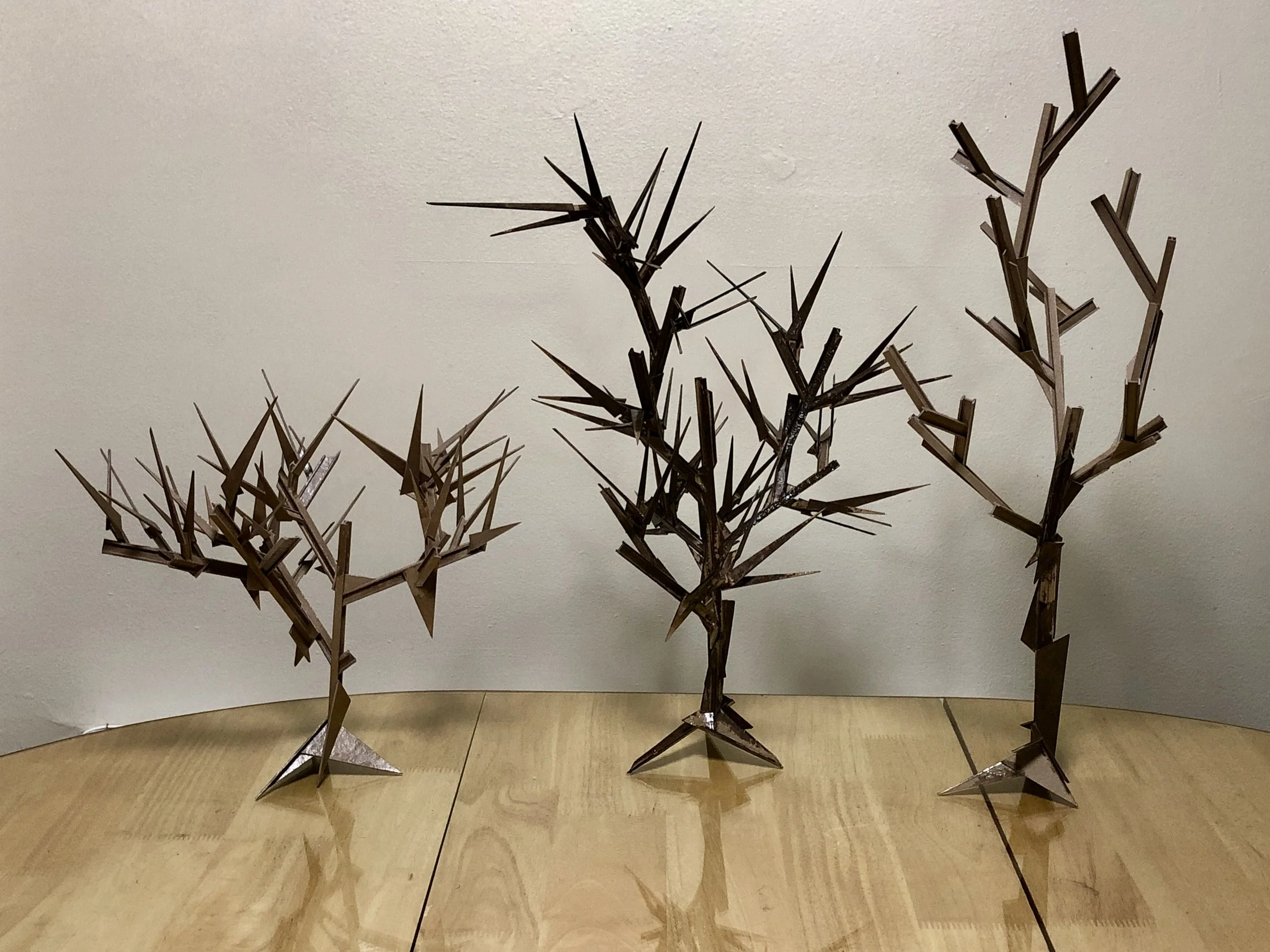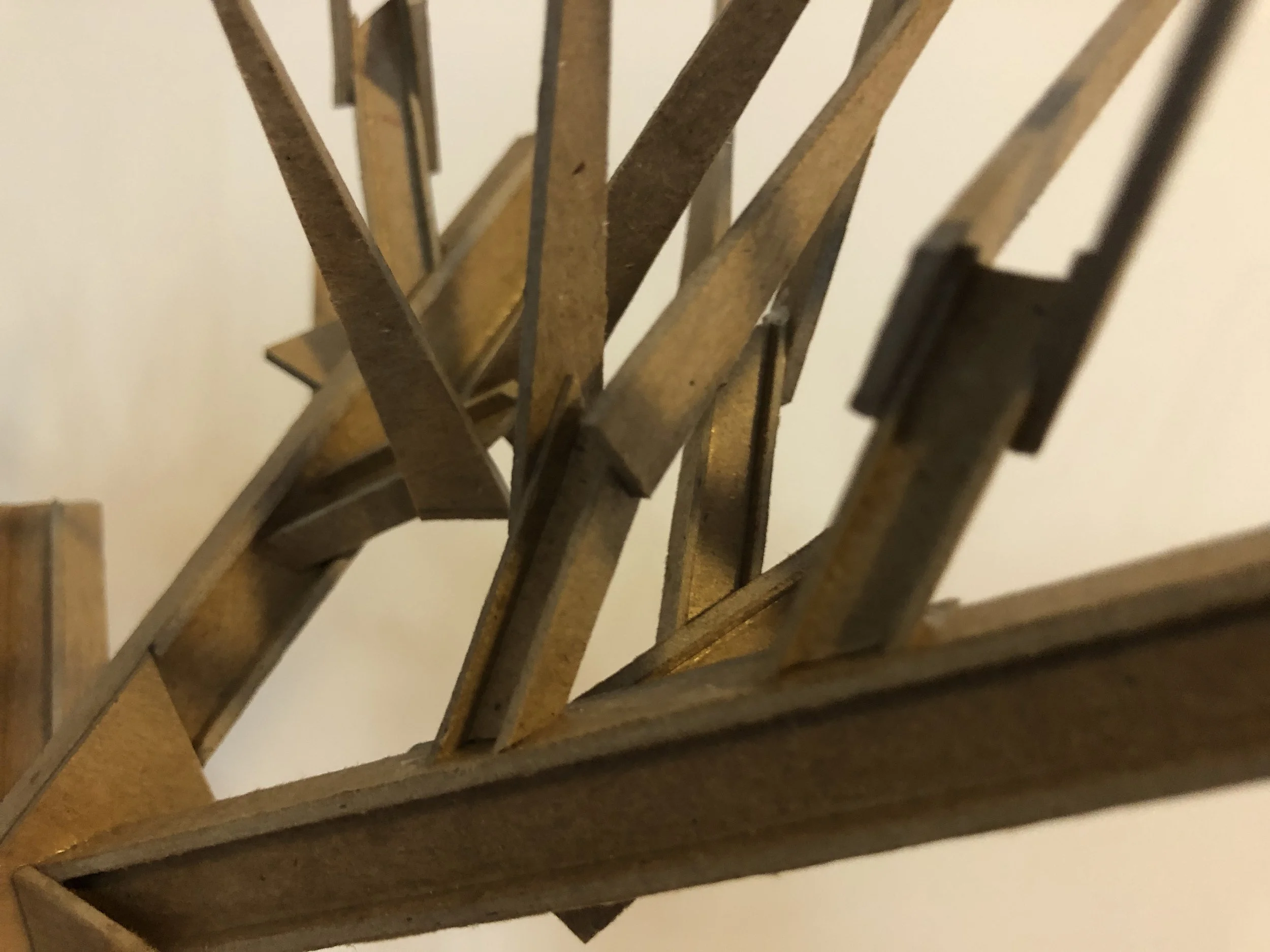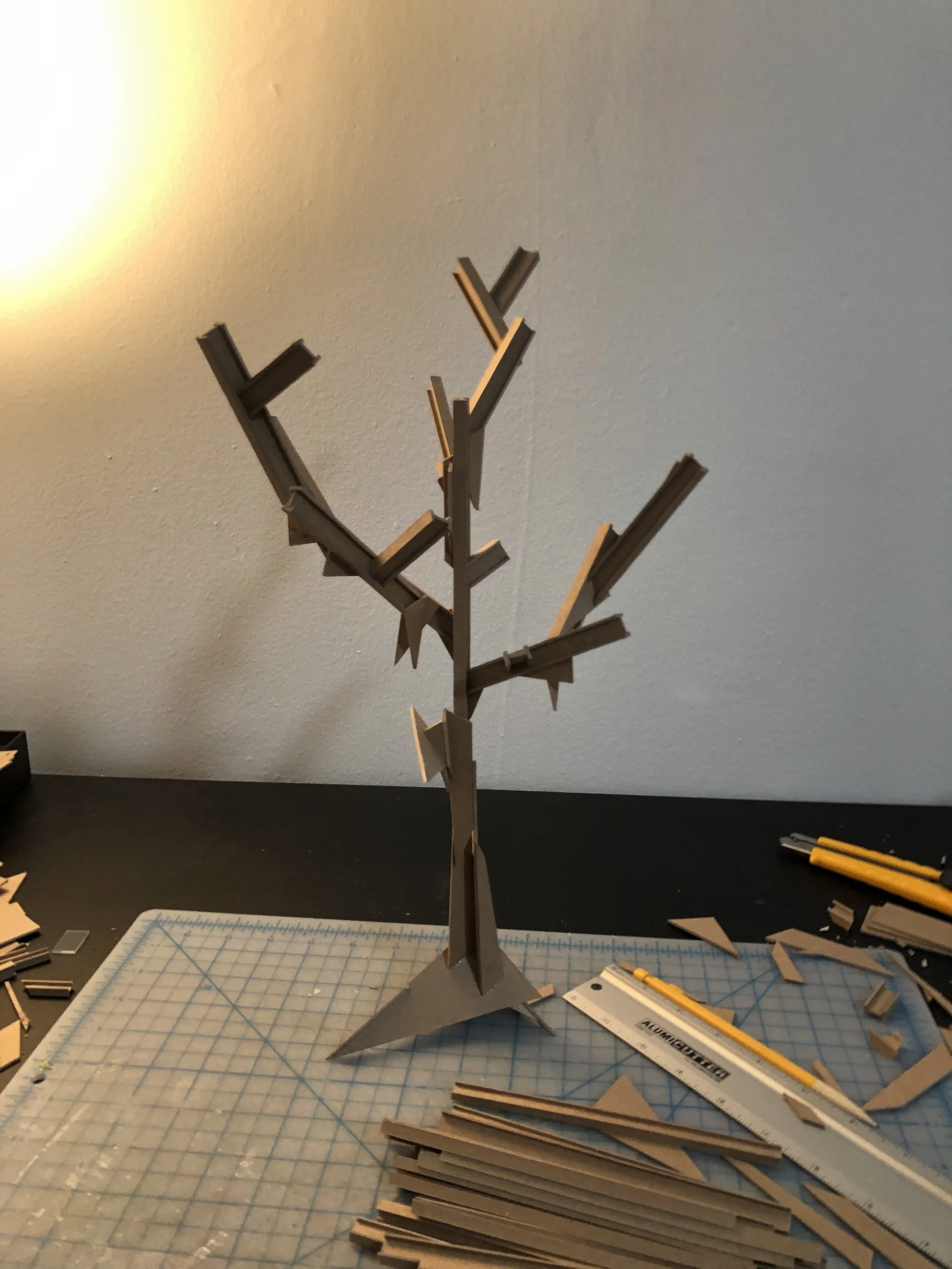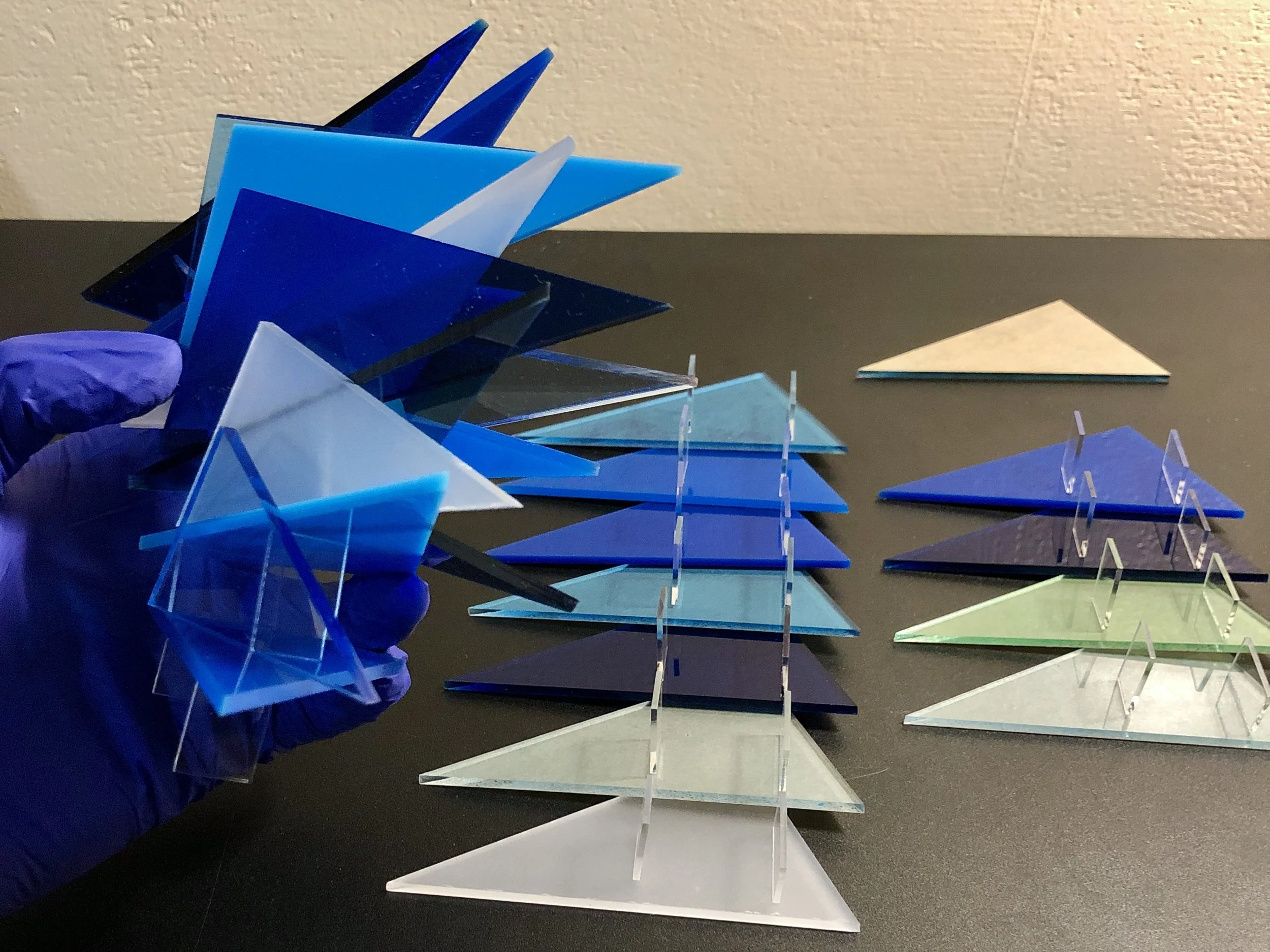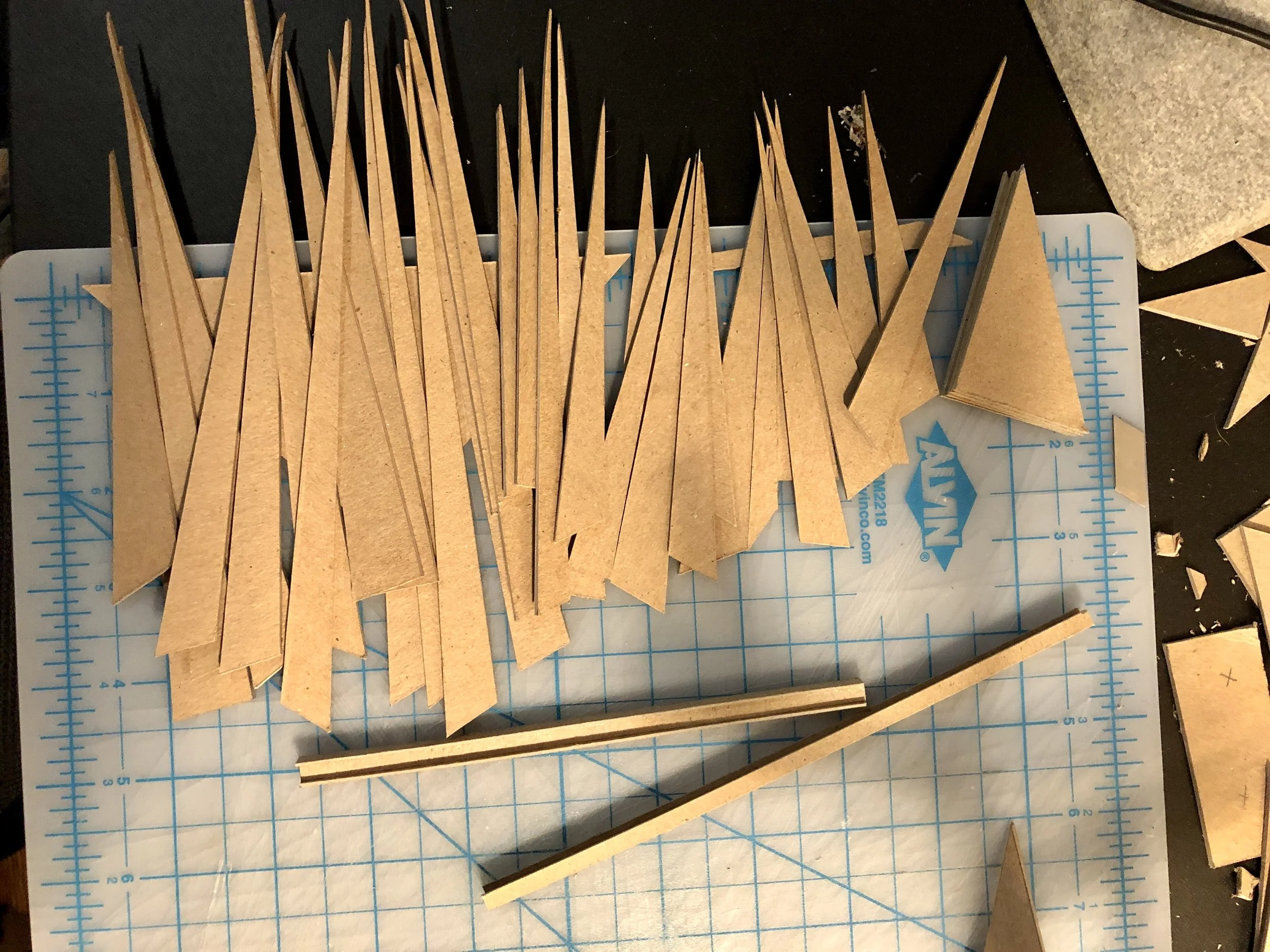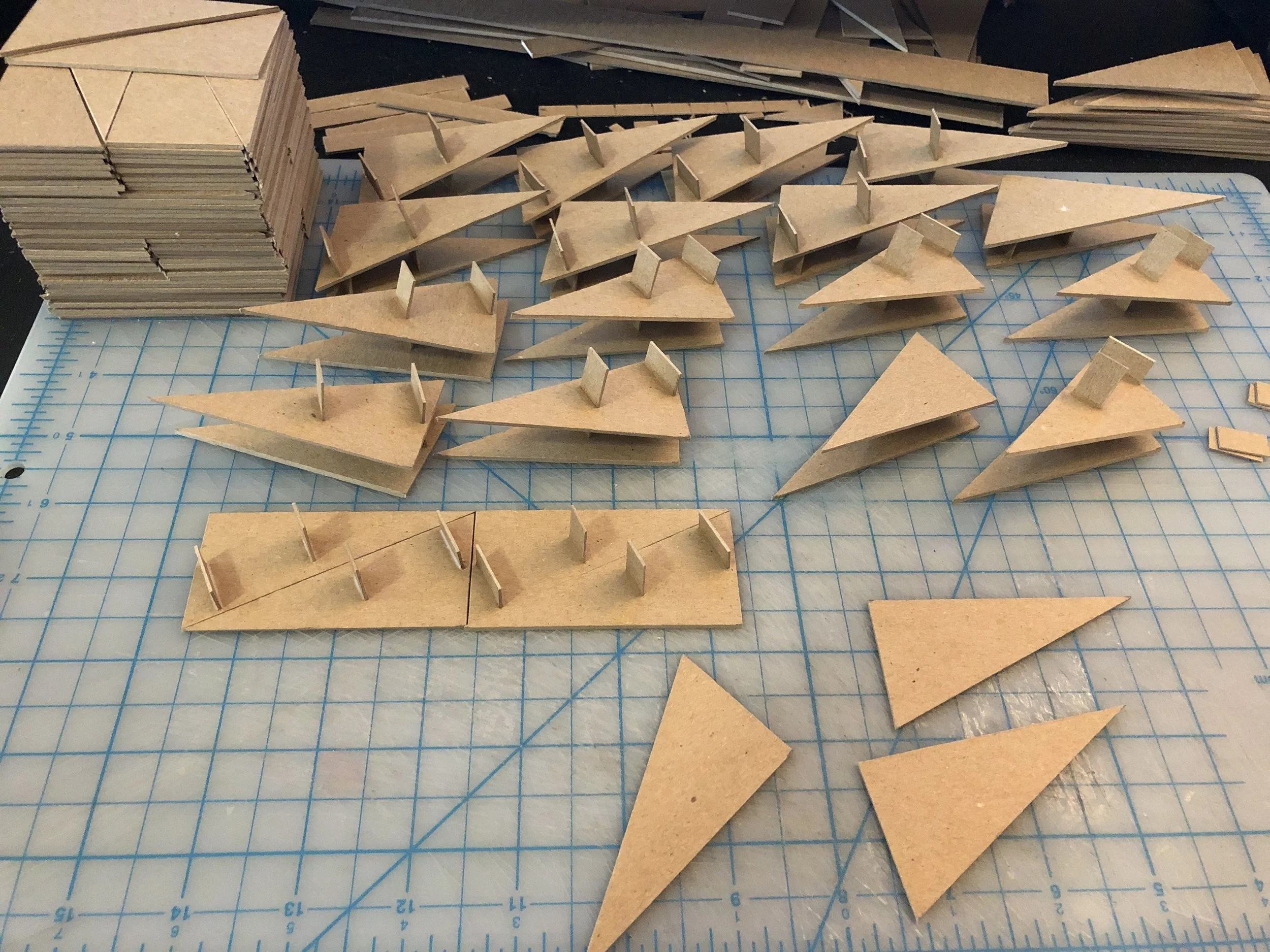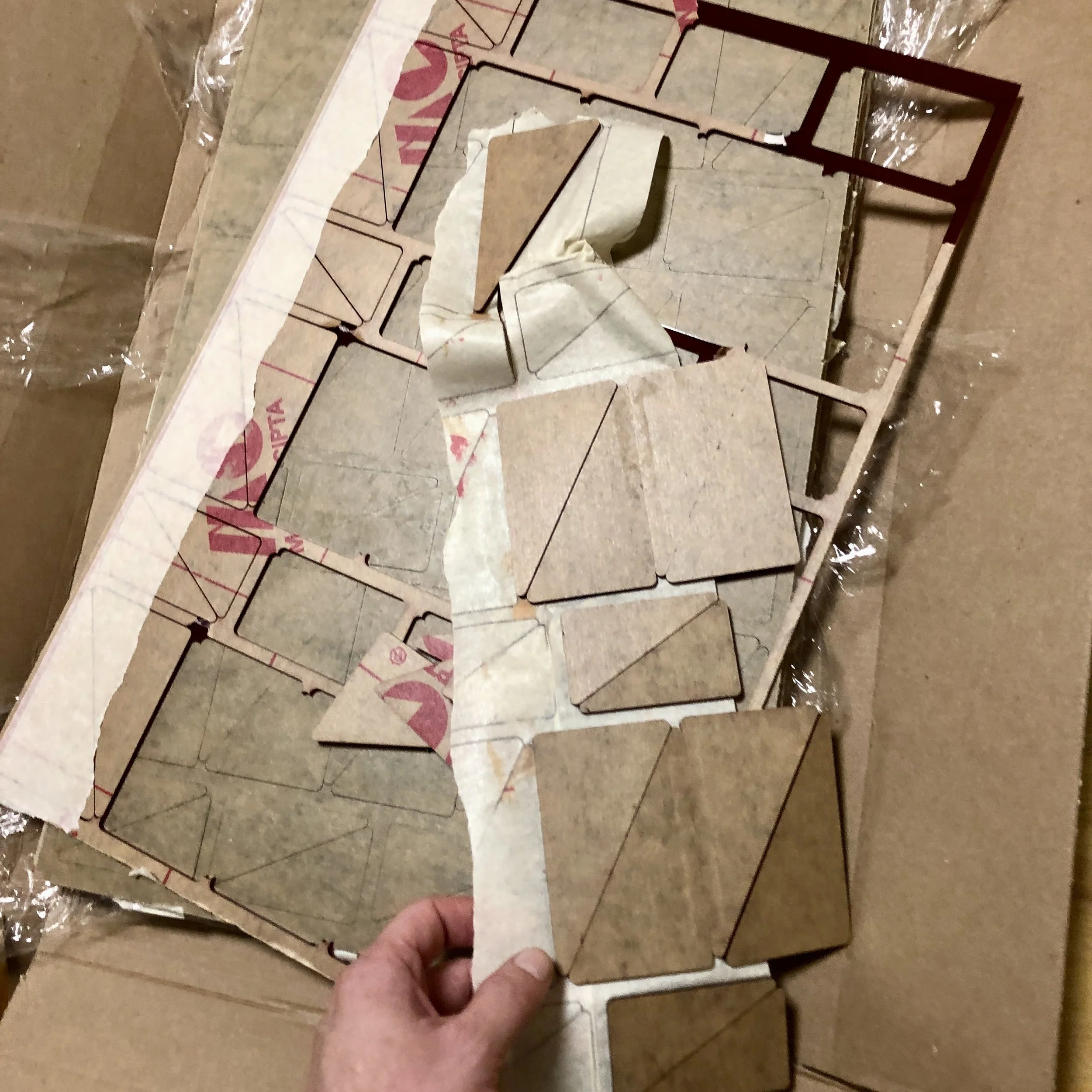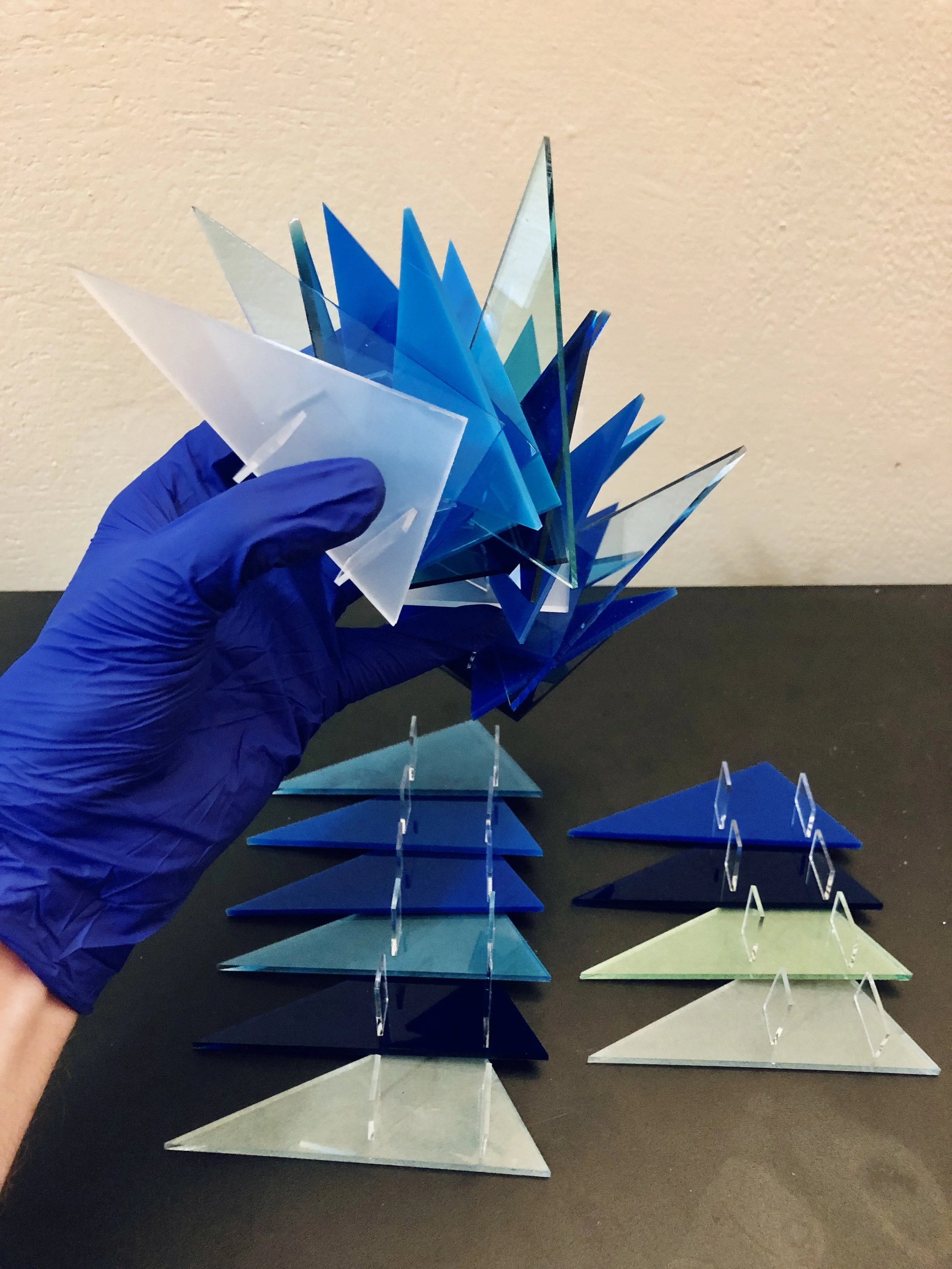
Artistic Process
SPINES
——
The spines were discovered while in a vertical architecture studio studying how hotel floor plates stack.
Think of a very simple climbing ladder with a series of rungs. Give it a twist, and now put triangles in-between the rungs like you would roofing tiles or animal scales.
They are made entirely from sheets of 1/16” chipboard, hand cut with a knife and a straight edge, glued together with Elmer’s white glue, and brush coated with several layers of marine epoxy.
——
They also come in sculptures made from 1/8” clear acrylic triangles that are cemented together in all different colors. I get them in batches from laser cut sheets.
——
They are thought out by intuition. Most are a unique shape, some templating is used with acrylic to explore color theory but each sculpture being hand made comes out slightly different anyways.
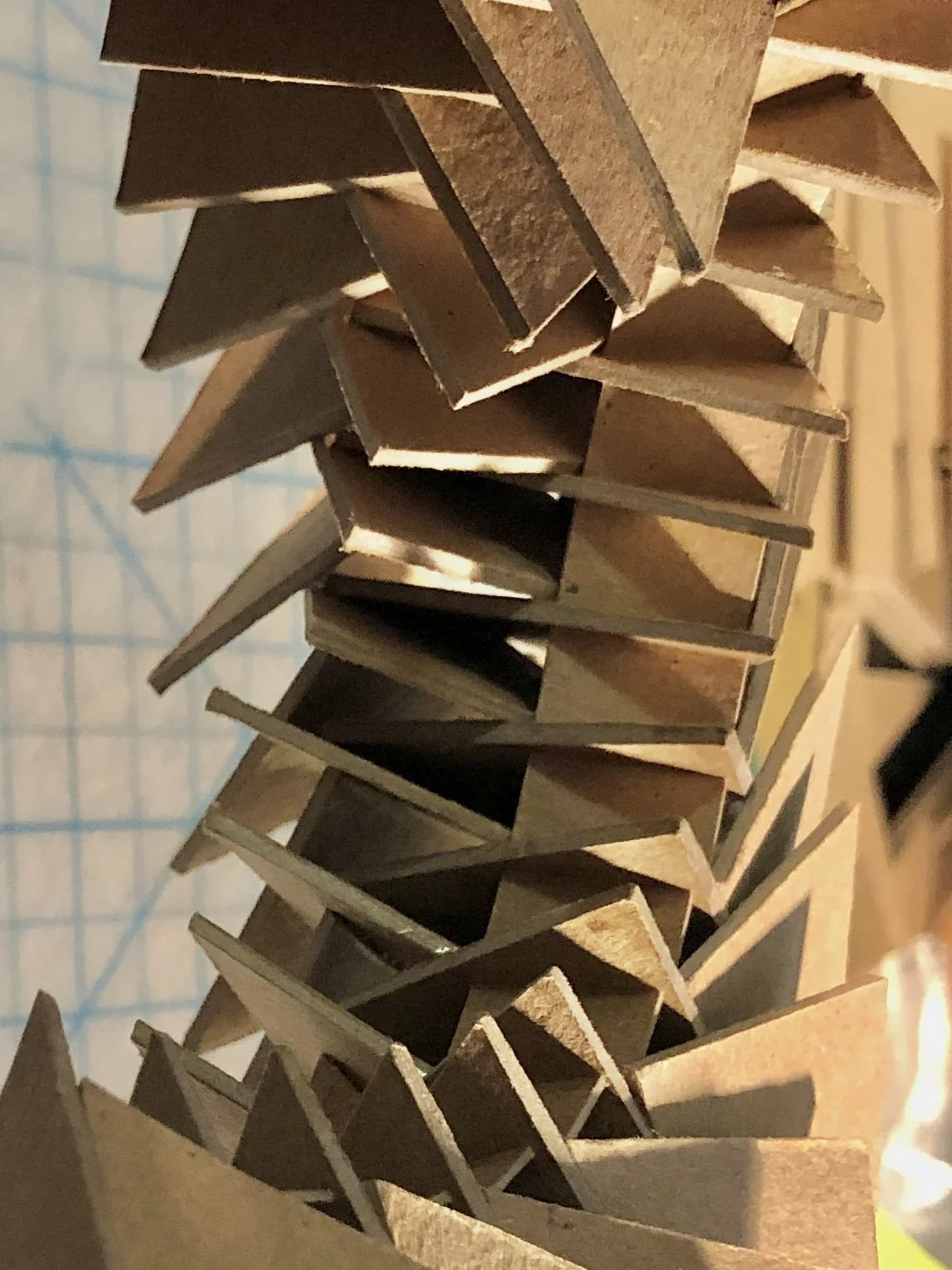

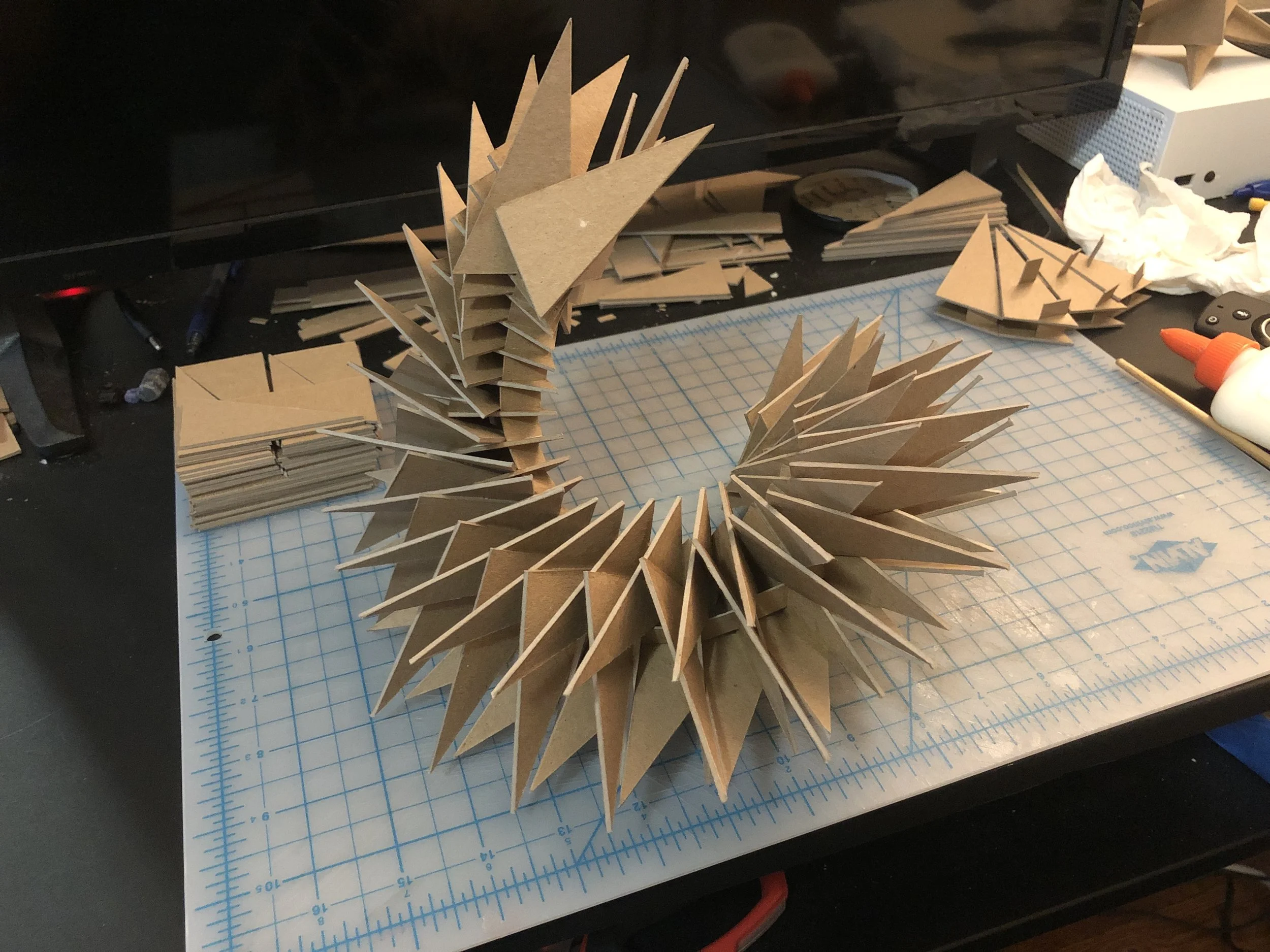
TREES
Trees are an expression of gravity and cantilevered forces. They are made from the same chipboard as the spines are but follow a different assembly process.
The trees start with small chipboard I-beams, cut out from small strips then glued back together. There is a reason we use this shape in our buildings. These chipboard I-beams make up what would be considered the trunk and branches.
Trees also have roots and leaves; both of these are expressed in geometries that work with the overall specific gravity of the piece to make it stable and freestanding. As the trees are assembled, layers of epoxy are added in order to strengthen the piece as it is built up from the ground.
The challenge is to land the singular point-center of gravity within each tree within the 2D plan of the base, and as close to the ground as possible. There is no kind of base attachment, so this consideration is paramount to a sturdy and lively sculpture.
Because of this process, each tree is unique and unto itself. There are standard moves, successful connection details which are repeated, but there is so much subtraction and additive processes into each it is impossible to remake any single one. They demand discipline to produce success.
